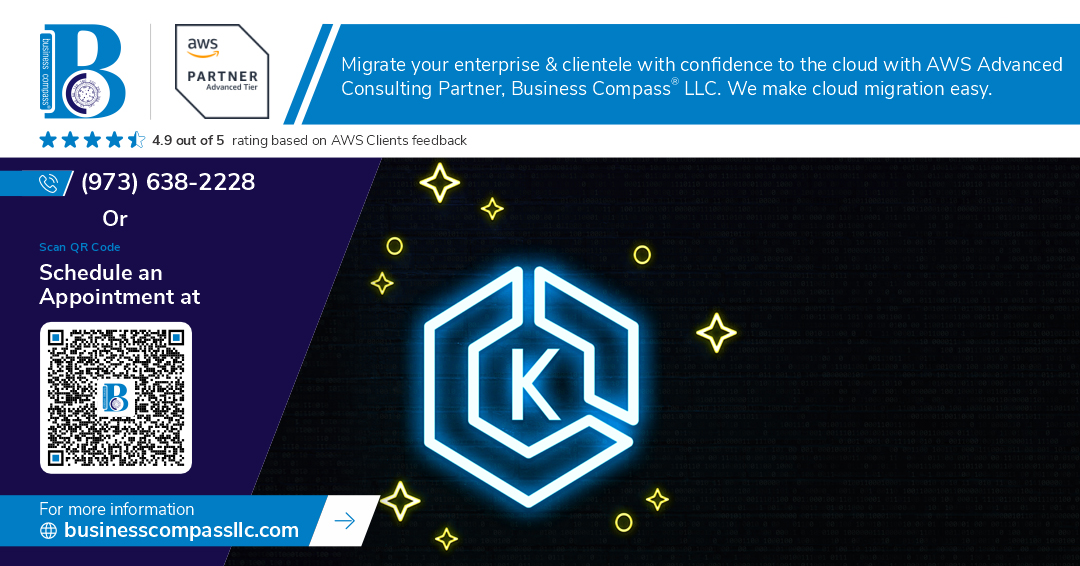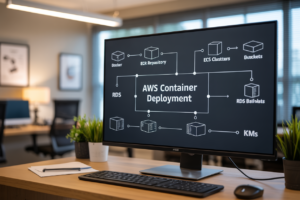Are you tired of struggling to keep up with the ever-evolving world of cloud computing? 🤔 The rapid pace of innovation in Amazon Web Services (AWS) can leave even seasoned professionals feeling overwhelmed. But fear not! There’s a solution that will transform your cloud computing experience and give you a competitive edge.
Imagine harnessing the power of cutting-edge features across EC2, Lambda, Fargate, ECS, and EKS – all in one place. 🚀 From enhanced performance to improved scalability, these new capabilities are designed to streamline your workflows and boost productivity. But with so many updates, how can you possibly stay informed and leverage them effectively?
In this blog post, we’ll dive deep into the latest and greatest features of AWS compute services. We’ll explore everything from EC2 enhancements that supercharge your virtual machines to Lambda innovations that revolutionize serverless computing. You’ll discover Fargate advancements that simplify container management, ECS updates that optimize your containerized applications, and EKS improvements that take Kubernetes to the next level. Get ready to unlock the full potential of AWS and take your cloud computing skills to new heights!
EC2 Enhancements
Improved instance types for better performance
AWS has introduced new EC2 instance types designed to meet the evolving needs of modern applications. These instances offer significant performance improvements across various workloads:
- Compute-optimized instances: Ideal for high-performance computing and batch processing
- Memory-optimized instances: Perfect for large in-memory databases and real-time big data analytics
- Storage-optimized instances: Designed for high I/O operations and large data sets
| Instance Type | Use Case | Performance Improvement |
|---|---|---|
| C6g | HPC, gaming | Up to 40% better price/performance |
| R6g | In-memory databases | Up to 15% higher memory bandwidth |
| I4i | Data analytics | Up to 30% lower latency |
New pricing options for cost optimization
EC2 now offers more flexible pricing models to help businesses optimize their cloud spending:
- Savings Plans: Commit to a consistent amount of compute usage and save up to 72%
- Spot Instances: Utilize spare EC2 capacity for up to 90% off On-Demand prices
- Reserved Instances: Lock in capacity for 1 or 3 years with significant discounts
Enhanced security features
AWS has bolstered EC2 security with several new features:
- EC2 Image Builder: Automate the creation, maintenance, and validation of secure images
- AWS Nitro Enclaves: Create isolated compute environments for processing sensitive data
- IMDSv2: Improved metadata service with added protections against SSRF attacks
Streamlined management tools
New management capabilities simplify EC2 operations:
- EC2 Auto Scaling: Now supports predictive scaling using machine learning
- EC2 Fleet: Simplify provisioning of mixed instance types and purchase options
- AWS Systems Manager: Enhanced features for patch management and resource groups
These EC2 enhancements collectively improve performance, cost-efficiency, security, and ease of management. Next, we’ll explore the exciting innovations in AWS Lambda, another crucial component of AWS’s compute services.
Lambda Innovations
A. Increased execution time limits
Lambda’s execution time limit has been extended from 15 minutes to 30 minutes, allowing for more complex and resource-intensive tasks. This enhancement opens up new possibilities for serverless applications, such as:
- Long-running data processing jobs
- Complex machine learning inference
- Extensive API integrations
B. Support for additional programming languages
AWS has expanded Lambda’s language support, now including:
| Language | Runtime Version |
|---|---|
| Rust | 1.0 |
| Dart | 2.17 |
| Swift | 5.7 |
This diversification enables developers to leverage their preferred languages and existing codebases more effectively in serverless environments.
C. Improved cold start performance
Lambda’s cold start times have been significantly reduced through:
- Improved container initialization
- Optimized runtime bootstrapping
- Enhanced caching mechanisms
These improvements result in faster function invocations and more responsive serverless applications.
D. New integration capabilities
Lambda now offers seamless integration with:
- Amazon EventBridge Pipes for event-driven architectures
- AWS Step Functions for complex workflow orchestration
- Amazon API Gateway WebSocket APIs for real-time applications
These integrations expand Lambda’s utility in building sophisticated, event-driven serverless systems.
E. Enhanced monitoring and debugging tools
AWS has introduced advanced tools for Lambda monitoring and debugging:
- Lambda Insights for comprehensive performance analysis
- X-Ray integration for distributed tracing
- CloudWatch Logs Insights for log analysis
These tools provide developers with deeper visibility into their Lambda functions, facilitating easier troubleshooting and optimization.
Now that we’ve explored Lambda’s innovations, let’s dive into the advancements in AWS Fargate, another key component of AWS’s serverless compute offerings.
Fargate Advancements
Expanded OS support
Fargate now offers broader operating system support, enabling developers to run containerized applications on a wider range of platforms. This expansion includes:
- Windows Server 2022
- Amazon Linux 2023
- Custom AMIs (limited availability)
| OS | Key Benefits |
|---|---|
| Windows Server 2022 | Enhanced security, improved performance |
| Amazon Linux 2023 | Optimized for AWS, frequent updates |
| Custom AMIs | Tailored environments, compliance requirements |
Improved resource allocation
Fargate’s resource allocation system has been refined to provide more granular control and efficiency:
- Fine-tuned CPU and memory allocation
- Automatic scaling based on application demands
- Improved task placement strategies
These enhancements lead to better resource utilization and cost optimization for containerized workloads.
Enhanced networking capabilities
AWS has significantly upgraded Fargate’s networking capabilities:
- Support for AWS PrivateLink
- Integration with AWS App Mesh
- Improved VPC networking performance
These advancements enable more secure and efficient communication between Fargate tasks and other AWS services.
New pricing model for cost savings
Fargate introduces a new pricing model designed to offer substantial cost savings:
- Fargate Spot for non-critical workloads
- Savings Plans for predictable usage
- Per-second billing for more accurate cost allocation
By leveraging these pricing options, organizations can optimize their Fargate spending while maintaining performance and reliability.
With these Fargate advancements, AWS continues to enhance its serverless container offerings, providing developers with more flexibility, improved performance, and cost-effective solutions for running containerized applications at scale. Next, we’ll explore the latest updates to Amazon ECS, which complements Fargate’s capabilities in the container orchestration space.
ECS Updates
Simplified cluster management
ECS has introduced a streamlined approach to cluster management, making it easier for developers to deploy and maintain containerized applications. The new cluster management interface provides:
- Intuitive dashboard for monitoring cluster health
- One-click cluster creation and scaling
- Automated resource optimization
These improvements significantly reduce the time and effort required for cluster administration, allowing teams to focus more on application development.
Improved service discovery
Service discovery in ECS has been enhanced to provide seamless communication between microservices. Key features include:
- Automatic DNS registration for services
- Integration with AWS Cloud Map
- Support for custom service discovery providers
| Feature | Benefit |
|---|---|
| DNS registration | Eliminates manual configuration |
| Cloud Map integration | Enables cross-region service discovery |
| Custom providers | Supports hybrid cloud environments |
Enhanced auto-scaling features
ECS now offers more sophisticated auto-scaling capabilities, enabling applications to handle varying workloads efficiently:
- Target tracking scaling based on custom metrics
- Scheduled scaling for predictable traffic patterns
- Step scaling for fine-grained control over scaling actions
These enhancements ensure optimal resource utilization and cost-effectiveness while maintaining application performance.
New deployment strategies
ECS has introduced advanced deployment strategies to minimize downtime and improve application reliability:
- Blue/Green deployments for zero-downtime updates
- Canary deployments for gradual rollouts
- A/B testing support for feature experimentation
These strategies provide developers with greater control over the deployment process, reducing risks associated with updates and enabling rapid iteration.
EKS Improvements
Streamlined cluster creation process
Amazon EKS has significantly simplified the cluster creation process, reducing the time and complexity involved in setting up Kubernetes environments. The new streamlined process includes:
- One-click cluster creation
- Automated VPC and subnet configuration
- Pre-configured security groups
This improvement allows developers to focus more on application development rather than infrastructure management.
Advanced networking options
EKS now offers enhanced networking capabilities to meet diverse application requirements:
| Feature | Description |
|---|---|
| VPC CNI | Improved performance and scalability |
| Calico | Advanced network policy enforcement |
| Cilium | eBPF-based networking and security |
These options provide greater flexibility in designing network architectures and implementing security policies.
Enhanced security controls
Security remains a top priority for EKS, with several new features:
- Fine-grained RBAC controls
- Integration with AWS Security Hub
- Automated security patch management
Improved observability and monitoring
EKS has expanded its observability features, offering:
- Native integration with Amazon CloudWatch
- Support for Prometheus and Grafana
- Enhanced logging capabilities
These improvements provide deeper insights into cluster performance and application behavior.
Simplified upgrade process
Upgrading Kubernetes clusters has become more straightforward with:
- In-place upgrades with minimal downtime
- Automated compatibility checks
- Rollback capabilities for failed upgrades
These enhancements significantly reduce the operational overhead of maintaining up-to-date Kubernetes environments.
With these improvements, EKS continues to evolve as a robust platform for container orchestration, offering enhanced performance, security, and ease of use. As we move forward, let’s explore how these EKS enhancements complement the broader ecosystem of AWS compute services.
Amazon Web Services continues to innovate across its compute services, delivering powerful new features and enhancements. From EC2’s improved instance types to Lambda’s expanded runtime support, these updates offer developers and businesses more flexibility and performance. Fargate’s cost optimizations, ECS’s simplified deployments, and EKS’s enhanced security measures further streamline container management and orchestration.
As cloud computing evolves, staying informed about these advancements is crucial for optimizing your infrastructure and applications. Explore these new features, test them in your environments, and leverage their capabilities to drive innovation and efficiency in your AWS-powered projects. By embracing these improvements, you can unlock new possibilities and stay ahead in the ever-changing landscape of cloud computing.




















